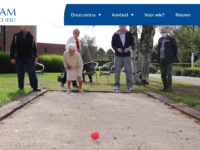Born in Belgium Professionals is a RIZIV project that offers a digital tool, developed by and for professionals who work with or for (vulnerable) pregnant women. The tool is an online, shared platform that centralizes information about the psychosocial situation of the pregnant woman and makes it available to her care providers and healthcare providers from the (para)medical and social sector, fully in accordance with privacy legislation (GDPR).
Country: Belgium
More than 80% of the residents in residential elderly care suffer from unwanted urine loss. This is why care staff check on them regularly, day and night. In order to minimize these disturbing and time-consuming incontinence rounds, the residential care organization Zorg-Saam set out to test new incontinence solutions equipped with sensor technologies that detect when bandages are saturated and alert care staff. With this innovation, supported by the The Programme for Innovation Procurement of…
Case Study
Bicycle Barometer: a Citizen Science Platform for Improving Bicycle Safety for High School Students

Adolescents are often victim of traffic accidents when in traffic between home and school. Cities need feedback from this group to optimize bicycle traffic safety and infrastructure, but it can be difficult to reach and influence youngsters individually. Together with more than 70 Flemish high schools, Ghent University (UGent) has developed the Bicycle Barometer, a citizen science ICT platform to collect information about bicycle behaviour and perceived road safety. The web platform enables…
Satellites collect images that can be used to identify deformations of infrastructure at millimetre level with InSAR analysis. This project investigates the use of InSAR in the monitoring of deformations of bridges. Can InSAR be of added value for a structural health assessment of bridges which, with aging assets over the largest part of Europe, becomes more and more critical? Nowadays the monitoring of bridges is very labour intensive and often not without danger. InSAR may reduce this.
Gov Buys Innovation is a modern version of public procurement, axed on the active search for innovative solutions available on the market. By reconsidering the way of interaction between the public and the private sector, we aspire to transform public entities into pioneers for new creative ideas, modernising countries in the benefit of private companies and all citizens.



